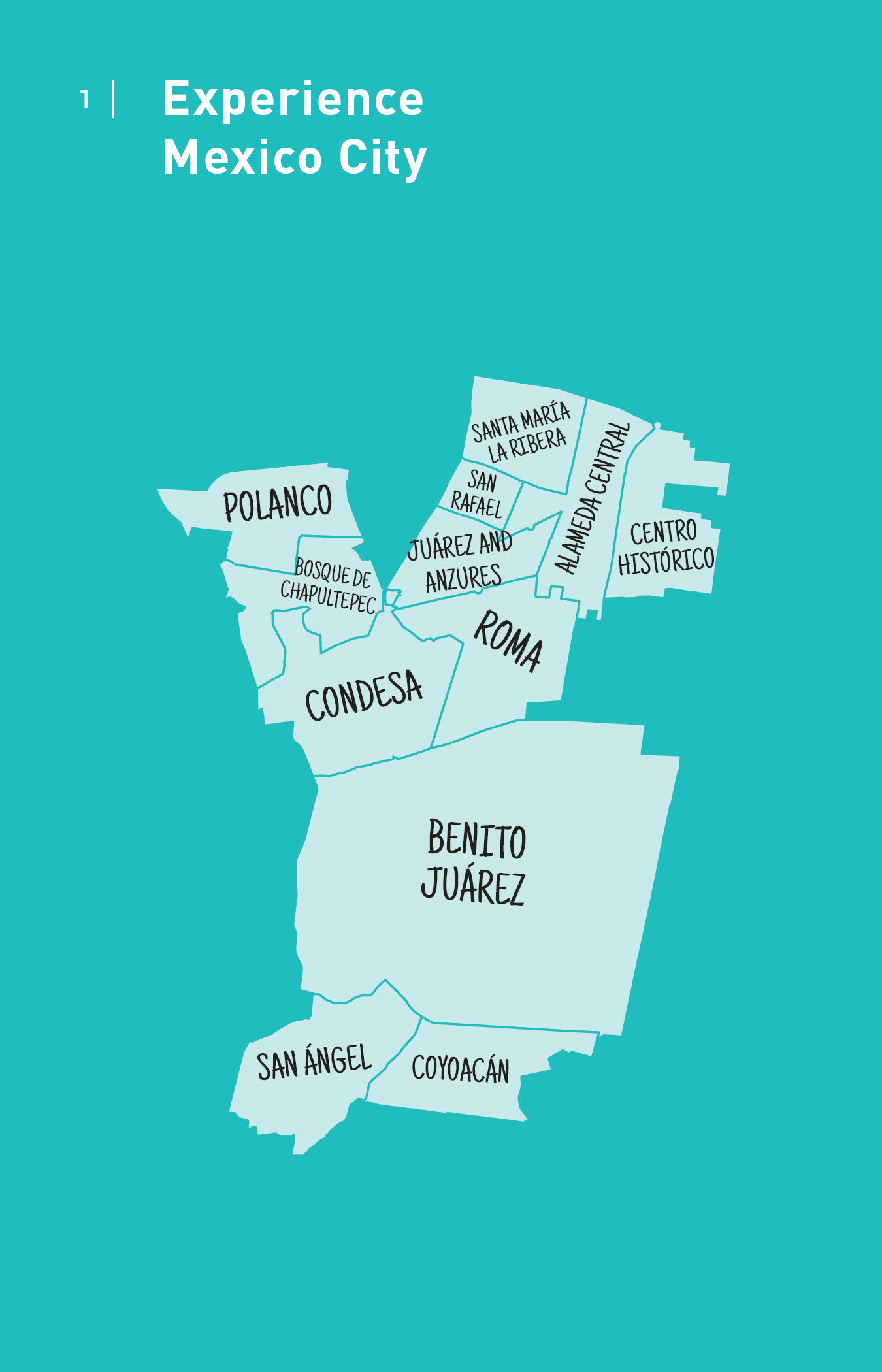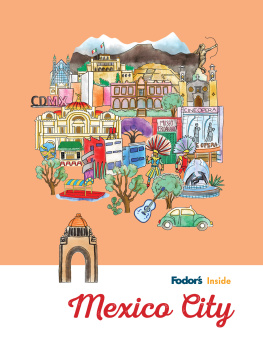Contents
CONTENTS
ABOUT THIS GUIDE
Inside Mexico Cityshows you the city like youve never seen it. Written entirely by locals, it includes features on the citys street art and galleries and plenty of insider tips. The result is a curated compilation infused with authentic Mexico City flavor, accompanied by easy-to-use maps and transit information.
Whether youre visiting Mexico City for the first time or a seasoned traveler looking to explore a new neighborhood, this is the guide for you. Weve handpicked the top things to do and rated the sights, shopping, dining, and nightlife in the citys most dynamic neighborhoods. Truly exceptional experiences in all categories are marked with a H .
Restaurants, bars, and coffee shops are a huge part of Mexico Citys appeal, of course, and youll find plenty to savor in its diverse neighborhoods. We cover cuisines at all price points, with everything from enduring institutions and groundbreaking chefs to the perfect late-night street snack; use the $ to $$$$ price charts below to estimate meal costs. We cover hotels in the Experience section at the front of this guide. We list adult prices for sights; ask about discounts when purchasing tickets.
#FODORSONTHEGO
Weve highlighted fun neighborhood facts throughout this guide. As you explore Mexico City, we invite you to use #FodorsOnTheGoto share your favorite discoveries with us.
Mexico City is constantly changing. All prices, opening times, and other details in this guide were accurate at this writing. Always confirm information when it matters, especially when making a detour to a specific place. Visit Fodors.com for expanded restaurant and hotel reviews, additional recommendations, news, and features.

WELCOME TO MEXICO CITY
First-time visitors who catch a glimpse of Mexico Citys breathtaking vastness as their plane descends are often surprised by the manageable pace and pleasing scale that defines many of its neighborhoods, from ritzy Polanco and San ngel to quaintly historic Coyoacn and Condesa. Although slightly more populous than New York City, its far less densely populated and less expensive. As a wonderfully vibrant, culturally blessed metropolis that can keep museum-hoppers, discerning gourmands, history buffs, and design-minded shoppers entertained for days, Mexico City also feels remarkably easy to navigate. Its little wonder that its cachet as a sophisticated, world-class travel destination continues to soar.
MEXICO CITY TODAY
Mexicos sprawling, energetic, and sometimes deeply complicated capital city offers a study in contradictions. Its venerable heritage traces back centuries before the Spaniards arrived in 1519, and yet as the largest metropolis in North America, it is a remarkably contemporary destination with a fashion-forward design scene, cutting-edge art galleries, and sceney restaurants and bars. As a whole, Mexico is a deeply Catholic nation in which men and women of all ages generally dress conservatively (locals rarely wear shorts), but same-sex marriage was legalized in 2009 and abortion in 2007, and its common to spot younger locals smoking weed and snuggling and making out on park benches in public. And despite its enormity and the often crushing traffic and packed public transportation that comes with it, drivers and pedestrians move at a relatively relaxed pace. Chilangos, as residents here are known, generally speak slower than other Latin Americans and are quite patient with visitors who arent fluent in Spanish. Indeed, the sometimes seemingly contradictory social and stylistic forces at work in CDMX appear to be a significant part of Mexico Citys appeal.
THE PRE-HISPANIC ERA TO THE COLONIAL PERIOD
Nestled beneath the jagged peaks of the Sierra Nevada range, few places in the Western Hemisphere have hosted human settlements longer than Mexico City, the present-day site of which has been continuously inhabited since at least the early 1300s. Archaeological evidence, however, confirms that nomadic tribes first settled Valle de Mxico and the surrounding region as far back as 17,000 years ago. The regions two most prominent archaeological sites, Cuicuilco in the south of the city and the formidable pyramids of Teotihuacn about 60 km (37 miles) northeast, supported thriving civilizations centuries before the Aztecs established the city of Tenochtitlannow Mexico Cityin 1325.
At the height of Tenochtitlans prominence as the center of indigenous Mexican civilization, Spanish explorer Hernn Corts arrived in 1519 with perhaps 1,000 troops and a considerably larger auxiliary force of anti-Aztec natives. By 1521, the once mighty Aztec Empire had been completely decimated through war and disease. Corts razed Tenochtitlan and in its place built Mexico City, which would serve as the capital of colonial New Spain for the next 300 years.












